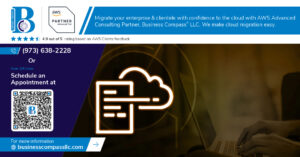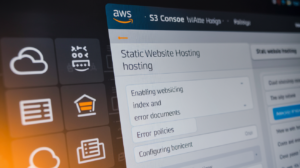Ever stared at a codebase so tangled that adding one feature felt like disarming a bomb? Yeah, that’s what happens when software architecture goes wrong.
Let’s be real—most developers jump straight into coding without thinking about structure. Then six months later, they’re drowning in technical debt and wondering why everything breaks when they change one tiny thing.
Software architecture patterns aren’t just academic concepts for system design interviews. They’re your blueprint for building applications that don’t collapse under their own weight.
In this guide, we’ll walk through 9 battle-tested software architecture patterns that successful teams actually use—not just theory, but practical approaches that make your code maintainable, scalable, and frankly, less of a headache.
But first, let’s talk about why the architecture pattern you choose might be the most important decision you’ll make…
Understanding Software Architecture Patterns
Why Architecture Patterns Matter for Application Success
Ever tried building a house without blueprints? That’s what developing software without architecture patterns feels like.
Architecture patterns aren’t just fancy diagrams for tech talks. They’re your roadmap to success. When your app hits unexpected traffic or needs new features, a solid architecture saves you from disaster.
The right pattern makes your team more productive. Developers can work on different parts simultaneously without stepping on each other’s toes. New team members get up to speed faster when there’s a familiar structure.
Your users benefit too. Well-architected applications respond quickly, crash less often, and adapt to changing needs. That translates directly to better reviews and higher retention.
The wrong pattern? It’s like wearing flip-flops to climb a mountain. You might start okay, but you’ll regret it halfway through.
The Evolution from Traditional to Modern Patterns
Architecture patterns have come a long way from the monolithic designs of the 90s.
Traditional patterns like layered architecture worked fine for simpler applications. Everything lived in one place – convenient but limiting. As applications grew more complex, these patterns started showing cracks.
Modern patterns emerged as a response to new challenges:
- Cloud computing demanded more flexible deployment
- Mobile apps required responsive backends
- Agile development needed architectures that supported rapid change
We’ve shifted from building digital monoliths to creating ecosystems of specialized components. Microservices, event-driven architectures, and serverless designs reflect our changing priorities: speed, scalability, and adaptability.
How Patterns Impact Scalability and Maintainability
The architecture pattern you choose today determines how much pain you’ll feel tomorrow.
Scalability isn’t just about handling more users. It’s about growing in all dimensions – more features, more developers, more complexity. Some patterns make scaling nearly impossible without complete rewrites.
Take maintainability. With the right architecture:
- Bugs stay isolated instead of cascading through systems
- Changes require touching fewer components
- Testing becomes targeted rather than all-or-nothing
Poor architectural choices compound over time. Technical debt accumulates like interest on a loan you can’t repay. Eventually, development slows to a crawl as teams spend more time fighting the architecture than building features.
The best architectures feel almost invisible – they guide without restricting, support without complicating. They make the hard problems manageable and the impossible problems merely difficult.
Layered Architecture: The Traditional Approach
Breaking Down the Presentation, Business, and Data Layers
Think of layered architecture as a well-organized sandwich. Each layer has its job, and they stack neatly on top of each other:
Presentation Layer: This is what users see and interact with. It’s your UI, web pages, and API endpoints. This layer shouldn’t do heavy lifting – it just takes user input and shows results.
Business Layer: Here’s where the magic happens. Business rules, validations, calculations – all the stuff that makes your app actually do something useful lives here. It doesn’t care how data is displayed or stored, it just processes it according to your business requirements.
Data Layer: The foundation that handles all database operations. It stores and retrieves information without worrying about business rules or how data will be shown to users.
The beauty? Each layer only talks to the ones immediately above or below it. Your UI never directly touches the database, and your data layer doesn’t know anything about screens.
When Layered Architecture Shines in Enterprise Applications
Not every architecture fits every problem, but layered architecture dominates enterprise apps for good reasons:
- Separation of concerns: Developers can focus on one layer at a time without breaking everything else
- Specialized teams: UI designers can work on the presentation layer while database experts handle data access
- Maintainability: When your database changes, only your data layer needs updates
- Familiarity: Most developers understand this pattern instantly, making onboarding easier
Large financial systems, insurance applications, and corporate ERP systems typically leverage this approach because stability and clear boundaries matter more than cutting-edge performance.
Common Pitfalls and How to Avoid Them
The layered approach isn’t perfect. Here are the traps that snare even experienced teams:
The “Pass-Through” Problem: When middle layers just pass data without adding value. Solution? Consider skipping layers when appropriate or consolidating functionality.
Layer Bleeding: When code from one layer starts creeping into another. Stay disciplined and use interfaces to maintain boundaries.
Overengineering: Not every app needs strict layers. For simpler applications, you might combine business and data layers.
Performance Bottlenecks: Each layer crossing adds overhead. Optimize critical paths and consider caching strategies.
Real-World Examples of Successful Layered Systems
Layered architecture isn’t just theoretical – it powers systems you probably use daily:
Microsoft Dynamics 365: This enterprise resource planning system uses distinct layers to handle everything from UI to complex business processes to database operations.
Java Enterprise Edition (JEE) Applications: Many banking and insurance systems built on JEE follow strict layering, which is why they can scale to millions of transactions while remaining maintainable.
SAP ERP: One of the most widely-used enterprise systems, SAP’s architecture relies heavily on layering to handle incredibly complex business processes across different modules.
The common thread? These systems prioritize maintainability and clear separation of concerns over raw performance – a tradeoff that makes perfect sense for complex enterprise applications.
Microservices: Building Scalable and Resilient Systems
Key Principles Behind Microservice Architecture
Microservices aren’t just a trendy buzzword. They’re a total shift in how we build software.
The core idea? Break your monolithic application into small, independent services that each do one thing really well. Each microservice runs its own process and communicates through lightweight APIs.
Think of it like this: instead of one massive Swiss Army knife, you’re building a toolkit where each tool is perfectly designed for its specific job.
These services are:
- Independently deployable: Update one service without touching others
- Loosely coupled: Minimal dependencies between services
- Organized around business capabilities: Aligned with what users actually need
- Owned by small teams: “You build it, you run it” mentality
The secret sauce is service boundaries. Done right, they’re clean and clear, preventing the dreaded “distributed monolith” where services become too entangled.
Benefits for Large-Scale Applications and Teams
Big tech companies didn’t adopt microservices for fun. They did it because the benefits are massive for complex applications.
For your tech stack:
- Scale individual services based on demand (busy checkout service? Add more instances)
- Choose the right tech for each job (Node for this, Python for that)
- Fail gracefully (one service down doesn’t crash everything)
- Enable continuous deployment with lower risk
For your teams:
- Smaller codebases mean faster onboarding
- Parallel development across multiple teams
- Clear ownership boundaries reduce conflicts
- Teams can move at different speeds
When Spotify wanted to scale both their product and engineering org, microservices let them organize into “squads” with clear ownership. The result? Faster innovation without stepping on each other’s toes.
Implementation Challenges and Solutions
Nobody tells you how hard microservices can be until you’re knee-deep in the transition.
The brutal challenges:
- Distributed systems complexity (goodbye predictable call stacks)
- Service discovery headaches (where is everything?)
- Data consistency nightmares (eventual consistency isn’t for the faint of heart)
- Monitoring and debugging across services (tracing a request through 20 services)
- Testing becomes exponentially more complex
Practical solutions that actually work:
- Start with a monolith, extract services strategically
- Implement robust service discovery (Consul, Eureka)
- Use circuit breakers to prevent cascading failures (Hystrix, Resilience4j)
- Invest in observability from day one (distributed tracing with Jaeger)
- Implement API gateways to simplify client interactions
- Automate deployment with CI/CD pipelines
Docker and Kubernetes have made containerization and orchestration much easier, but don’t underestimate the operational complexity they introduce.
Case Studies: Netflix, Amazon, and Uber
Netflix: The OG microservices success story. Their journey from monolith to over 700 microservices wasn’t overnight. They migrated incrementally, starting with less critical services. Their chaos engineering approach (the infamous Chaos Monkey) deliberately breaks services in production to ensure resilience.
Amazon: Jeff Bezos’ famous “API mandate” essentially forced teams to communicate only through service interfaces. This painful transition enabled Amazon to scale from books to… everything. Each team now owns their service end-to-end, including 2AM pages when something breaks.
Uber: Started with a monolith but quickly hit scaling issues as they expanded globally. Their microservices architecture now processes millions of rides daily across different geographies. Their Domain-Oriented Microservice Architecture (DOMA) organizes services around business domains rather than technical functions.
The common thread? None of these companies jumped straight to hundreds of microservices. They evolved gradually, learned painful lessons, and built tooling to manage complexity.
Event-Driven Architecture: Responding to Change
Core Components: Publishers, Subscribers, and Event Channels
Event-driven architecture is all about reactions – like when your phone buzzes with a notification. Three key players make this possible:
Publishers are the notification senders. They detect when something interesting happens and shout it out to whoever’s listening. They don’t care who gets the message – they just throw it out there.
Subscribers are the receivers who care about specific events. They’re like people who’ve subscribed to particular YouTube channels – they only want updates about things they’re interested in.
Event channels (sometimes called message brokers or event buses) are the middlemen. Think of them as the notification system that makes sure the right messages reach the right subscribers.
Here’s how they work together:
Publisher → Event → Event Channel → Interested Subscribers
The beauty? Publishers and subscribers don’t need to know about each other. The channel handles all that messy coordination.
Achieving Loose Coupling Between Components
The real magic of event-driven architecture is how it keeps things separate. Your app components barely need to know each other exist.
Traditional architectures often create tight dependencies – Component A directly calls Component B, creating a brittle chain. But with events, components just broadcast what happened and move on with their lives.
Take an e-commerce app: When someone places an order, the order service simply announces “Hey, order #12345 was placed!” Then it gets back to taking more orders. The inventory, shipping, and notification services all respond to that event in their own way, without the order service needing to manage them.
This separation gives you:
- Independent development and deployment of components
- Easier testing (no complex mocks needed)
- The ability to add new features without touching existing code
- More resilient systems that can partially function when some components fail
Scaling Event-Based Systems Effectively
Event-driven systems shine when you need to handle growth. They scale horizontally like champions.
First, message queues act as buffers during traffic spikes. When Black Friday hits and orders flood in, your event queue can hold those events until processors catch up – no customer-facing errors.
Second, you can scale individual components based on their specific needs. Is your payment processor struggling while the recommendation engine sits idle? Just add more payment processors to handle those specific events.
But scaling these systems does come with challenges:
- Event ordering: Sometimes sequence matters. You need strategies to handle this.
- Eventual consistency: Data might not update everywhere at once, so your design needs to accommodate this.
- Monitoring: Tracking events across distributed systems requires robust observability tools.
Despite these challenges, companies like Netflix, LinkedIn, and Amazon rely heavily on event-driven patterns to handle massive scale while maintaining system flexibility.
Clean Architecture: Prioritizing Business Logic
A. Robert Martin’s Approach to Sustainable Software Design
Uncle Bob (as Robert Martin is affectionately known) didn’t just create Clean Architecture for fun. He saw developers drowning in technical debt and fighting with brittle systems that broke when you looked at them funny.
His approach revolves around one radical idea: your business logic should never depend on delivery mechanisms or databases. They should depend on you.
Clean Architecture puts your actual business problems at the center of everything. The stuff that makes your application valuable – the core rules, the domain logic – that’s what matters most. Everything else is just details.
The genius is in the separation. By building concentric circles of responsibility, with dependencies pointing inward, you create a system that can survive change. And let’s be real – change is the only constant in software.
B. Dependency Rules That Protect Your Core Business Logic
The golden rule of Clean Architecture is dead simple: source code dependencies must point inward.
Inner layers know nothing about outer layers. Your business rules don’t care if data comes from a database, the cloud, or carrier pigeons. They just process that data according to your business needs.
This isn’t just architectural purity for its own sake. This approach means:
- You can swap out your database without touching business logic
- UI changes don’t ripple through your entire codebase
- Your core logic is infinitely testable without mocks
- New developers can understand the system faster
When an outer layer needs to communicate with an inner layer, it happens through interfaces that the inner layer defines. The power dynamic is flipped – your business logic dictates how others talk to it, not the other way around.
C. Implementing Use Cases and Entities Effectively
The beating heart of Clean Architecture lives in two key components: Entities and Use Cases.
Entities represent your business objects and core rules. They’re the nouns in your domain language – Customers, Orders, Products. These objects have no idea they’re in a software application. They just enforce the rules that would exist even if you were using paper and pencil.
Use Cases orchestrate the flow of data to and from your Entities. They represent specific business actions – PlaceOrder, RegisterUser, CalculateInvoice. Each Use Case is a single, focused operation that your application performs.
The magic happens when you implement them right:
- Keep Entities pure and framework-free
- Design Use Cases for a single responsibility
- Use input/output boundary interfaces to communicate
- Don’t leak domain concepts outward
This approach creates a system where business rules are clearly expressed in code, not buried under frameworks and libraries.
D. Migration Strategies from Legacy Systems
Nobody starts with clean architecture. You’re likely staring at a monolith that makes you want to cry when you open the codebase.
Migrating to Clean Architecture doesn’t have to be a big-bang rewrite. Start small:
- Identify a bounded context in your system
- Create a clean architecture structure for new features in that area
- Gradually refactor existing code as you touch it
- Use the Strangler Fig pattern to replace components
The beauty of this approach is you can maintain two architectural styles simultaneously during transition. Your legacy code still works while you incrementally bring sanity to your system.
For large systems, consider an anti-corruption layer – a facade that translates between your clean modules and legacy code. This lets you build clean code that’s protected from the old system’s messiness while still integrating with it.
Hexagonal (Ports and Adapters) Architecture
Isolating Core Logic from External Concerns
Ever been frustrated when changing a database breaks your entire app? That’s what hexagonal architecture aims to fix.
At its heart, hexagonal architecture (or ports and adapters) creates a protective bubble around your business logic. Your core application doesn’t care if you’re using MongoDB, MySQL, or storing data in text files. It just doesn’t.
Instead of your business rules tangling with infrastructure concerns, you create clear boundaries. Your application core sits in the middle, blissfully unaware of the outside world. It communicates through “ports” – simple interfaces that define what your app needs, not how those needs are met.
This separation isn’t just theoretical fluff – it’s practical protection against the chaos of changing requirements. When the marketing team suddenly wants to read data from Salesforce instead of your API, you just write a new adapter. The core remains untouched.
Designing Flexible Input and Output Ports
Ports are the secret sauce in hexagonal architecture. Think of them as contracts or promises about what functionality is needed, without specifying implementation details.
Input ports (primary/driving ports) allow external systems to talk to your application core. These define the services your application offers.
Output ports (secondary/driven ports) let your application core talk to the outside world. These represent what your application needs from external systems.
The beauty? Your core only depends on these abstract interfaces, never on concrete implementations. This means:
- You can swap out a REST API for GraphQL without touching core code
- Moving from one payment processor to another just means writing a new adapter
- Testing becomes dramatically easier (more on that next)
Testing Benefits of Port-Based Design
This architecture pattern is a testing dream. Since your core logic doesn’t directly depend on databases, APIs, or other external systems, you can test it in complete isolation.
Want to test your order processing logic? No need to spin up a database. Just create a mock implementation of your repository port. Need to test what happens when a payment fails? Create a test adapter that simulates failures.
This gives you three massive advantages:
- Tests run lightning fast (no waiting for database operations)
- Tests are deterministic (no flaky external services causing random failures)
- You can focus on testing business logic without infrastructure noise
Plus, you can test adapters separately to verify they correctly implement the port interfaces. This creates a comprehensive test strategy that targets each architectural component appropriately.
Service-Oriented Architecture (SOA)
Creating Reusable Business Services
Building reusable business services is the heart of SOA. Think of these services as LEGO blocks that snap together to build enterprise solutions. Each service handles a specific business function – payment processing, inventory management, customer verification – and can be mixed and matched across different applications.
The magic happens when you design these services with clear boundaries and well-defined interfaces. A good SOA service:
- Represents a complete business capability
- Stays independent from other services
- Exposes standardized contracts (often SOAP or REST)
- Hides its internal implementation details
SOA shines when you need to connect systems that speak different languages. Your legacy mainframe, modern cloud apps, and third-party services can all communicate through these standardized interfaces.
Differences Between SOA and Microservices
Microservices and SOA are cousins, not twins. Here’s what separates them:
| Feature | SOA | Microservices |
|---|---|---|
| Size | Larger, business-function oriented | Small, focused on single responsibility |
| Communication | Often synchronous, ESB-dependent | Typically asynchronous, direct |
| Data | Shared databases common | Independent databases preferred |
| Governance | Centralized, standardized | Decentralized, team autonomy |
| Deployment | Monolithic or modular | Independent containers/services |
SOA was built for enterprise integration while microservices optimize for speed and agility. SOA services tend to be chunkier, handling complete business processes, while microservices are lightweight and specialized.
Enterprise Service Bus: Benefits and Drawbacks
The Enterprise Service Bus (ESB) was SOA’s traffic controller – routing messages, transforming data formats, and orchestrating service interactions. When implemented well, an ESB delivers:
- Reduced point-to-point integration complexity
- Centralized security and monitoring
- Protocol and format transformation
- Message routing and orchestration
But ESBs come with baggage too:
- They create a single point of failure
- Performance bottlenecks emerge as traffic increases
- They’re expensive to license and maintain
- Centralized governance slows down development
Modern SOA implementations often replace heavyweight ESBs with lighter API gateways or messaging systems.
When SOA Makes More Sense Than Newer Patterns
Despite newer, shinier architecture patterns, SOA remains relevant in specific scenarios:
- Complex enterprise integration – When connecting dozens of disparate systems with different technologies
- Strict governance requirements – Regulated industries where centralized control is mandated
- Reuse across diverse applications – When business services need consistent implementation across multiple channels
- Gradual modernization – Transitioning from monoliths to more modern architectures
SOA provides the structure and governance that wild-west microservices sometimes lack. For organizations with complex integration needs or those that need to maintain strict control over their services, SOA often delivers more value than trendier patterns.
Model-View-Controller and Its Variations
A. MVC for Web Applications: Separating Concerns
The MVC pattern isn’t just an architectural choice – it’s practically the backbone of modern web development. Why? Because it neatly splits your application into three distinct pieces:
- Model: Handles data and business logic
- View: Takes care of the UI and presentation
- Controller: Acts as the traffic cop between the two
This separation is genius when you’re building complex web apps. Your database operations stay in the model, your HTML lives in the view, and your routing logic sits in the controller. Clean, organized, and much easier to debug.
Take Ruby on Rails – it bakes MVC right into its framework. When you create a basic blog app in Rails, you’ll have models for posts and comments, views for displaying them, and controllers handling user interactions. Each piece knows its job and sticks to it.
B. MVVM for Modern Frontend Development
MVVM (Model-View-ViewModel) took what was great about MVC and made it even better for frontend work, especially with data binding frameworks like Angular, Vue, and Knockout.
The ViewModel is the secret sauce here. It serves as a specialized converter that transforms model information into view-friendly formats and handles view logic. Your view becomes dumber (in a good way) – it just binds to properties the ViewModel exposes.
User clicks button → View tells ViewModel → ViewModel updates Model → Model changes → ViewModel updates → View reflects changes
This pattern shines in reactive applications where UI needs to instantly respond to data changes. The two-way binding means less boilerplate code and cleaner separation between your UI and business logic.
C. MVP and How It Improves Testability
MVP (Model-View-Presenter) might look like MVC’s cousin, but it has a crucial difference: the Presenter directly handles the View through an interface.
In MVP, the View is essentially passive – it forwards all user actions to the Presenter, which then decides how to update both the Model and the View. This creates a setup where you can easily swap components for testing.
Want to test your Presenter logic? Mock the View interface and you’re good to go. No need to worry about complex UI components or DOM manipulation. Your tests become focused, reliable, and much faster to run.
This pattern works wonders in environments where UI testing is difficult but business logic testing is critical.
D. Selecting the Right Pattern for Your UI Needs
Choosing between MVC, MVVM, and MVP isn’t about finding the “best” pattern – it’s about finding the right tool for your specific job:
| Pattern | When to Use | Notable Frameworks | Testing Ease |
|---|---|---|---|
| MVC | Server-side rendering, traditional web apps | Ruby on Rails, Laravel, Django | Good |
| MVVM | Rich client-side apps with data binding | Angular, Vue.js, WPF | Better |
| MVP | Applications requiring extensive unit testing | Android (common), ASP.NET | Best |
Your technology stack often dictates your choice. Building a React app? You’ll likely lean toward something MVVM-like with React’s state management. Working in Android? MVP might be your best bet.
E. Combining UI Patterns with Larger Architecture Styles
The real power comes when you nest these UI patterns within larger architectural approaches. Think of them as pieces of a bigger puzzle.
You might use MVVM for your frontend while placing that inside a microservices architecture. Or implement MVC modules within a clean architecture approach, with each controller representing a different use case.
The clean architecture approach particularly complements these UI patterns. Your UI pattern handles presentation concerns while the clean architecture manages your domain logic and dependencies. This combination creates applications that are both beautiful on the surface and solid underneath.
Don’t feel locked into using just one pattern throughout your entire application. Smart architects mix and match based on specific module needs, creating hybrid approaches that leverage the strengths of each pattern.
Practical Implementation Strategies
Choosing the Right Pattern for Your Project Requirements
Picking the right architecture pattern isn’t about following trends – it’s about solving your specific problems. Start by answering these questions:
- What’s your team’s experience level?
- How big is your application expected to grow?
- What are your performance requirements?
- How important is scalability?
For smaller projects with straightforward requirements, Layered or MVC patterns often work perfectly. Why complicate things if you don’t need to?
For complex enterprise applications, Clean or Hexagonal architecture gives you long-term flexibility, though they require more upfront design.
If you’re building something that needs to scale dramatically, Microservices might be your answer – but remember, they come with distributed system challenges that can bite you later.
Here’s a quick decision guide:
| If You Need | Consider This Pattern |
|---|---|
| Simplicity & speed to market | Layered or MVC |
| Domain complexity isolation | Hexagonal or Clean |
| Massive scalability | Microservices |
| Responding to real-time events | Event-Driven |
| Integration with many systems | Service-Oriented |
Hybrid Approaches That Combine Multiple Patterns
The architecture police won’t arrest you for mixing patterns. In fact, the most successful systems often combine approaches.
Think of a monolith built with Clean Architecture principles that gradually moves key components to microservices. Or an Event-Driven backbone that connects several smaller systems built with different internal architectures.
Some powerful combinations:
- Clean Architecture + Event-Driven: Use Clean for your core domain with events for communication between bounded contexts
- Layered + Microservices: Start with a clean layered approach for each microservice
- Hexagonal + Service-Oriented: Perfect for systems that need to integrate with many external services
The trick is understanding which aspects of each pattern solve your specific challenges.
Migration Paths for Legacy Applications
Stuck with a legacy monolith? You’re not alone. The good news is you don’t need to rewrite everything at once.
Start with the strangler pattern: build new features using your target architecture while gradually replacing old components. This approach lets you deliver value while improving your architecture.
Some practical steps:
- Identify clear boundaries in your existing codebase
- Refactor toward those boundaries (even within the monolith)
- Extract components one by one, starting with those that change most frequently
- Use adapters to bridge between old and new systems
- Gradually shift traffic to new components
For many teams, moving to a modular monolith is a practical first step before considering microservices.
Tools and Frameworks That Support Each Pattern
The right tools make architecture implementation much easier. Here’s what works well with each pattern:
For Layered and MVC architectures:
- Spring MVC, Django, Ruby on Rails, and Laravel all provide excellent structure
For Clean and Hexagonal:
- Domain-driven design (DDD) frameworks
- Dependency injection containers (Spring, .NET Core)
For Microservices:
- Kubernetes for orchestration
- Service meshes like Istio
- API gateways (Kong, Amazon API Gateway)
For Event-Driven systems:
- Kafka, RabbitMQ, or AWS EventBridge
- CQRS frameworks
Don’t get caught in analysis paralysis choosing tools. Pick something that matches your team’s expertise and start building. You can refine as you learn.
Software architecture patterns serve as fundamental blueprints that shape how applications are built, maintained, and scaled. Whether you’re implementing the traditional Layered Architecture for its simplicity, embracing Microservices for scalability, adopting Event-Driven Architecture for responsiveness, or pursuing Clean Architecture for maintainability, each pattern offers unique advantages for specific development scenarios. The right architecture can dramatically impact your application’s performance, flexibility, and long-term sustainability.
As you evaluate which pattern best suits your project needs, remember that architecture is rarely a one-size-fits-all solution. Many successful applications combine elements from multiple patterns to address specific requirements. Start with a clear understanding of your business goals, technical constraints, and team capabilities before selecting an architecture. Whichever pattern you choose, implementing it with deliberate consideration and consistent practices will help you build robust, maintainable software that can evolve alongside your business needs.




















